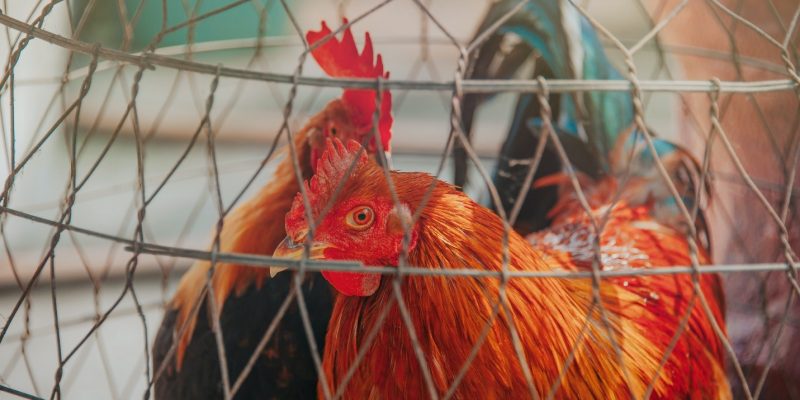There are many different opinions on the color of a chicken coop. Some people say that white is the best, while others think it should be red. You need to remember that your personal preference will dictate what color you choose for your chicken coop.
There are so many differing opinions because every person has their own idea of what colors work well with chickens and which don’t. We have compiled a list of some common colors and their pros and cons about poultry housing!
What Is a Chicken Coop?
A chicken coop is a type of shelter used to house chickens. Although, the design of a chicken coop is simple, it should have at least three walls with the roof slanted to protect against rain. This type of shelter can be made from any material such as wood, metal, or plastic.
Why Is It Important to Consider Color When Building Your Chicken Coop?
Keeping your chickens warm, as well as keeping them happy, is very important. The last thing you want is for your chickens to be cold. That’s when they can start picking up parasites or worse illnesses, such as pneumonia. Therefore, you want to make sure that the interior of your chicken coop is decorated with colors that provide a happy environment and allow for plenty of sunshine inside!
The Best and Worst Colors for A Chicken Coop?
There are plenty of colors to choose from when it comes to building a chicken coop. However, you must remember that you are the one in control of what color is chosen – and what color will not work for you. With that in mind, we’ve compiled a list of some good colors for your next chicken coop!
- Bronze: Bronze provides warmth, looks natural, and is less reflective than other light colors such as white or grey. It’s essential to ensure there’s ventilation within the structure as bronze does not provide great insulation properties.
- Orange: Orange works well on poultry because it has enough “bright” quality while being low-key; As well, it provides movement inside the house and reminds them of daylight hours. Orange is a color that can be seen from afar, and as such, it’s not easily overlooked by predators.
- Purple: Purple has calming effects on people, which also work well with the chickens – you’ll find they’re less prone to picking up parasites or illness in this environment. If you intend to raise show-quality poultry, purple may not be the best choice, as it’s not seen very often in this setting.
- Red: Red is excellent for chickens that will be slaughtered because blood tends to show up better on a red surface than any other color of coop – and isn’t too great for living chickens!
- Yellow: Yellow can also have calming effects on chickens and help them do well during their stay.
- White: White is the most popular color for chicken coops because it reflects light more than any other color, giving your chickens a happy environment as they enjoy plenty of natural sunshine inside!
- Grey: Grey may be an excellent choice if you’re looking to keep things calm, although it may not be the most exciting color to look at – this is a tricky balance.
- Brown: Brown is a good choice for your chicken coop because chickens always enjoy an earthy environment and feel safe in brown tones. The downside of this color? It’s less reflective than other colors, which can make them susceptible to predators stalking their prey.
The Best Colors for a Chicken Coop: white, purple, and orange are the best choices because they provide plenty of warmth inside while still being low-key in color. red, yellow, and brown may not be the worst choice, but they’re not as reflective, making them more susceptible to predators. The worst colors for a chicken coop are white or light blue because predators can see them easily.
How Can You Incorporate These Colors into Your Design Without Making It Look Too Busy or Distracting?
An important thing to remember in designing the appearance of your chicken coop is that less is more. Although there are plenty of colors to choose from, make sure you don’t over-design so it looks cluttered.
This will only over-stimulate the chickens, which can be upsetting for them. They’ll start picking up on parasites or diseases much quicker if their surroundings are too busy; so, try not to go overboard with patterns or textures.
One excellent way to use color within a chicken coop design is through overhead lighting – this can give natural daylight hours without exposing the birds to unnecessary UV radiation, making them vulnerable to illness.
Conclusion
At the end of this post, we hope that you better understand what colors are best for your chicken coop and why chicken coops have 2 doors.
When deciding what color to paint your chicken coop, you should consider the season and consider various colors.
Whatever you decide on, make sure it reflects well in both winter and summer! We also encourage you to reach out with any questions or comments and will do our best to help answer them quickly and thoroughly. So leave us a comment below!














[…] However, if the air doesn’t or the system isn’t doing a satisfactory job, then it’s a good idea to invest in a modern ventilation system just like the modern shades on the chicken coop. […]